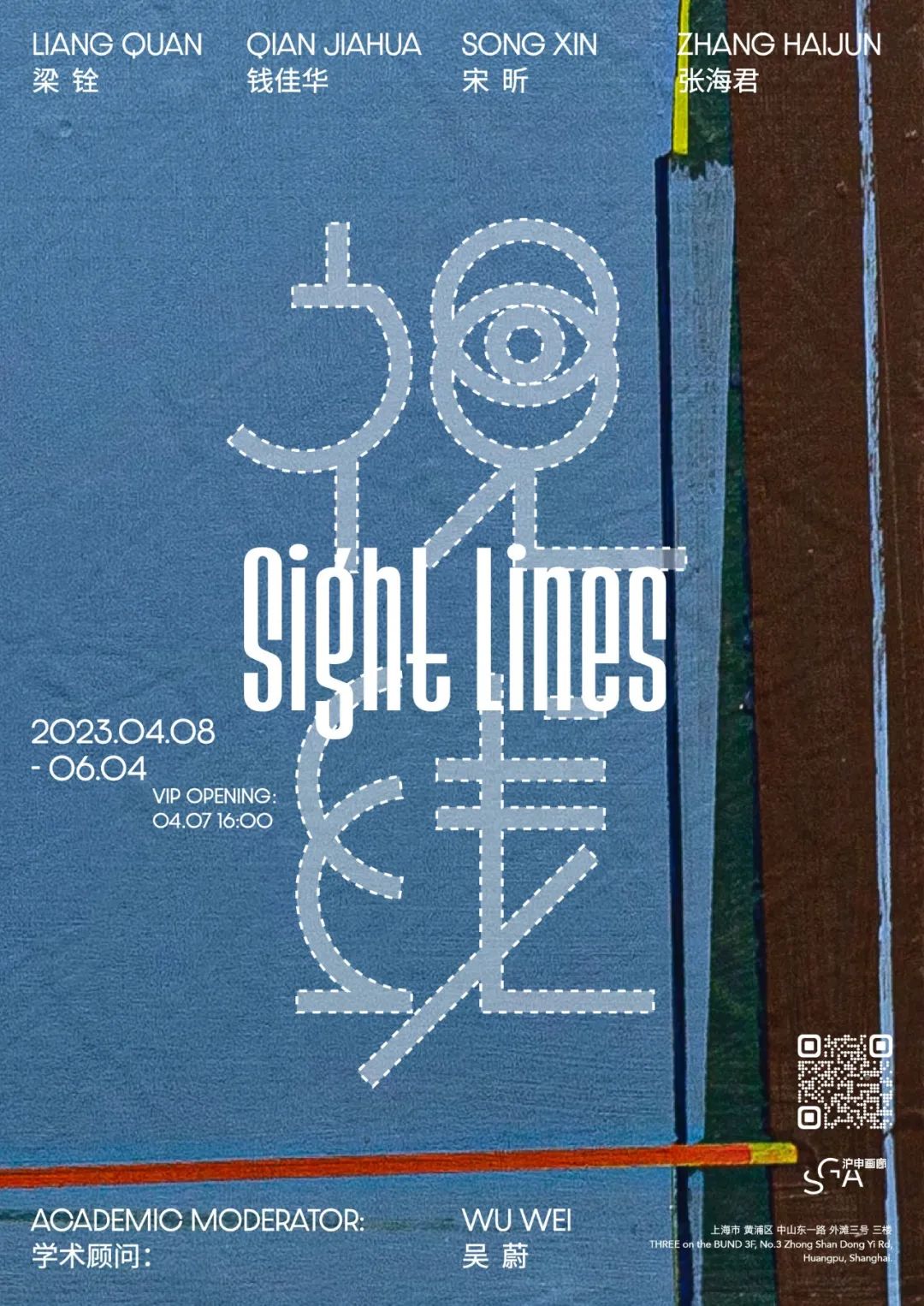
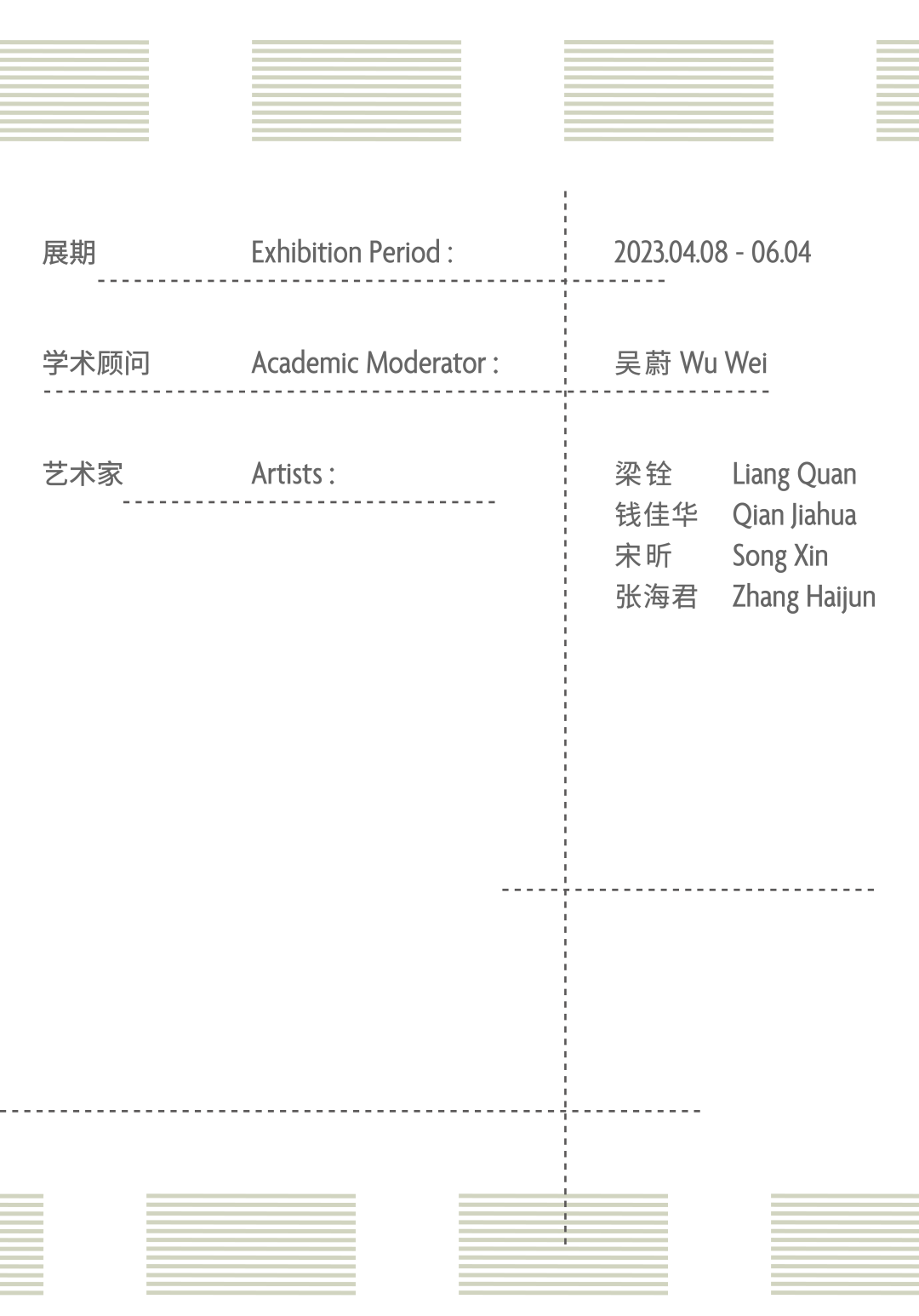

视线是人类感知世界的一种重要方式,是我们认知和思考的基础之一。本次展览以“视线”为题,旨在揭示视线不仅仅是对客观存在的事物和现象的感知,同时还具有建构意义。通过艺术家的视线所观看和描绘的对象,是主观的、个体化的产物,基于此,我们通过对已有视觉经验的修正、扩充和转化,重新感受、理解、认知与想象世界。
Marking the foundation for cognition and thought, our sight is central to how we perceive the world. The exhibition "Sight Lines" brings in a wider horizon to the theme of 'sight', not only as a sensory perception of objective things and phenomena, but also as a creative capacity to construct something new. The works on view arise from a culmination of objects observed and depicted through the eyes of four artists. As subjective and individualised entities, they revise, expand and transform our orthodox visual experiences, thereby leading us to understand, recognise, re-perceive and re-imagine our existing surroundings.

美国心理学家 James J. Gibson (1904 – 1979)
正如吉布森 (1904-1979) 的《视知觉理论》所指出的,知觉的原材料不是感官数据,而是环境信息;视觉发生于大脑中,而不是在眼睛里。本次参展的四位艺术家的作品都涉及线与抽象的概念,他们经由画笔记录下变化的感知,而不只是由视网膜上的图像所主导的观看。画中的线迹既是绘画的基本元素之一,亦是伏延千里的思维的形状,是一种精神状态的投射。这些绘画不与观众分享共同经验,即绘画的目的不是向观众展示一种可识别的视角或经验;它们与个体经验亲密无间,从而为观众带来一些他不曾见过,也未曾体验的东西,或惊讶,或疑惑,或触动心弦,或豁然开朗。它们让我们明白,某些形式的抽象需要长时间的、沉思的凝视,某些隐匿的情感也需要在内观中获得释放。
American psychologist James J. Gibson's (1904 – 1979) wrote in his Theory of Visual Perception that the raw material of perception is not sensorial data but environmental information. In other words, the brain completes the picture vision of what we see, not the eyes. Here, the presented works address the notion of line and abstraction, recording perceptual fluctuations and transience through the artists' brushwork rather than a mimetic transmission of images received by their retina. Similarly, line, which appears as a fundamental element found in all these works, refers also to a stream of thought and a reflection of spiritual condition. These paintings do not share a common experience with the audience, i.e., they do not seek to evoke a form of recognisable perspective or experience from their audience. Instead, they carry a level of intimacy stemmed from the artist's personal experience and reveal to us something inimitable. They can surprise, befuddle, tug on our heartstrings, or/and open our eyes. They endow us with an understanding that some works require a long, contemplative gaze, and that our subconscious emotions require us to internalise the path of seeing into a meditative reflection.
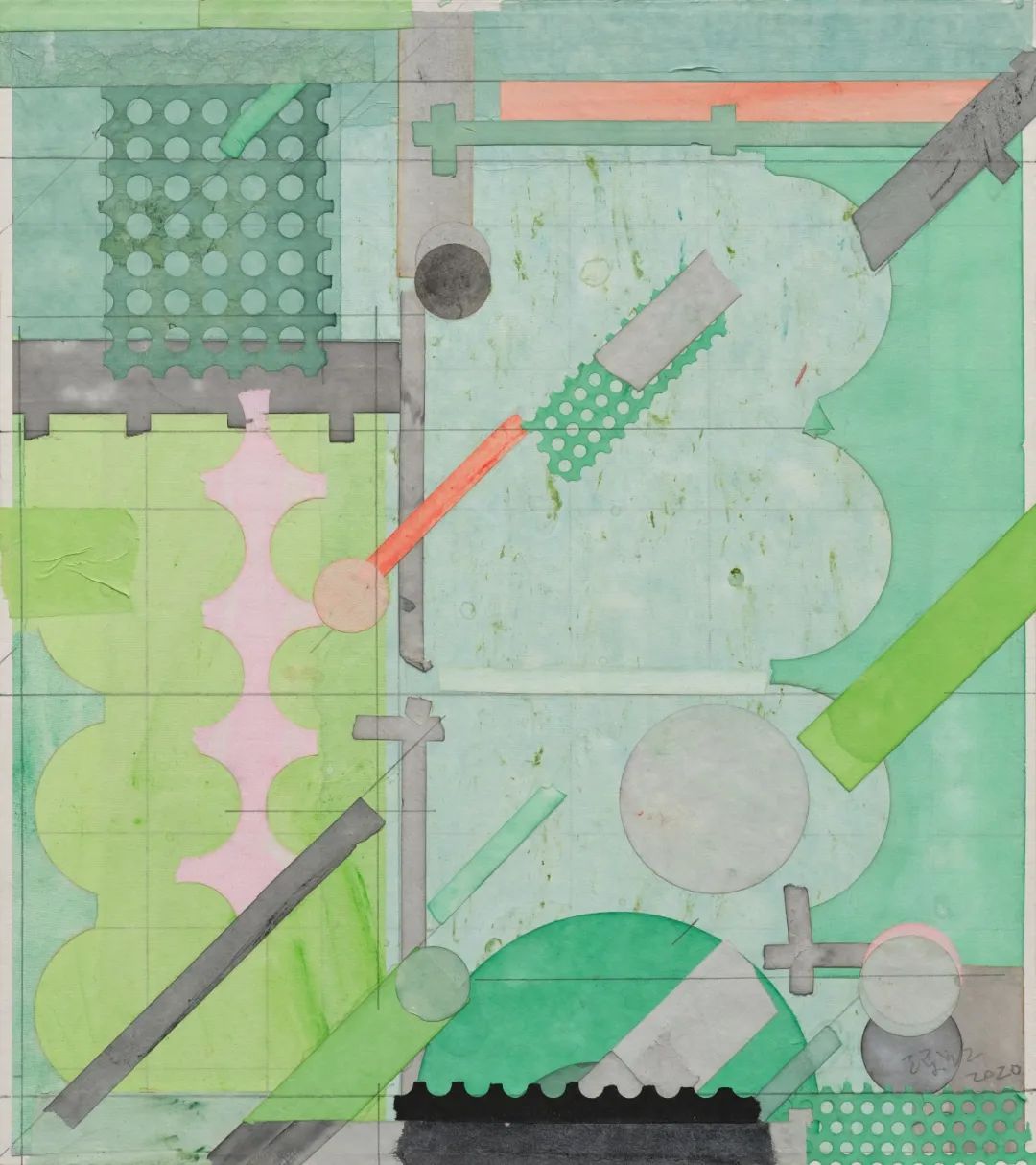
梁铨 Liang Quan, 柳浪闻莺之一 Birdsong in the Willows no.1, 2020
对于好画家来说,挑战不在于如何达到某种视觉效果,而在于如何避免太快或太容易达到效果。因此,好画家会寻找新的方法,设置路障,制定公式,使前路曲折浩荡。梁铨就是这样一位画家,他思空见远,其艺术是绘画直觉与艺术哲思的自在通融。他的作品常由撕碎的宣纸残片重新拼贴而成,画面被分割成各种几何形状。用彩墨精确渲染纸的肌理或颜色不是艺术家的目的所在,相反,他从概念层面处理纸的层次、组合、动静与远近关系,他找到了一种极具个人风格的方法来平衡形式自由与特定的绘画结构。宣纸的脆弱性与构图的稳定性之间的对比创造了一种令人着迷的张力,虽然这些画是绝对抽象的,具有不可规定的复杂性和矛盾性,但它们传达了完整的、沉浸式的视觉和心理感受,并与艺术史的伟大传统建立了紧密的联系。那些由纸张边缘随机或刻意创造的线条,正是现在和过去之间的纽带。
For a talented painter, the challenge is not about achieving a particular visual outcome, but avoiding settling too immediately or comfortably with one preferred effect. One should always be sourcing for new artistic ventures, setting new obstacles and shuffling with new formulas so as to stimulate his/ her creative process. Such exemplary is found in artist Liang Quan. As someone who actively looks ahead, Liang's art is a seamless blend of his artistic intuition and philosophical ideologies. In terms of method, Liang creates by re-assembling shredded rice paper fragments and dividing his composition into geometric forms. Strictly speaking, the accurate rendering of texture or colour with Chinese ink on paper is not Liang's primary goal. Instead, his focus resides in the conceptual articulation of layering, combination, movement and spatial distance onto paper, pursuing to balance formal freedom on the basis of structural painting. The juxtaposition between the frailness of rice paper and the stability of his pictorial composition exudes mesmerising tension. And while his works appear chiefly abstract – with un-prescriptive complexity and contradiction – they convey a complete and immersive visual and psychological experience that honours great traditions throughout history. Happenstance or not, these lines and folds, which peek along the perimeters of his paper, create a looping timeline that link us between the past and the present.
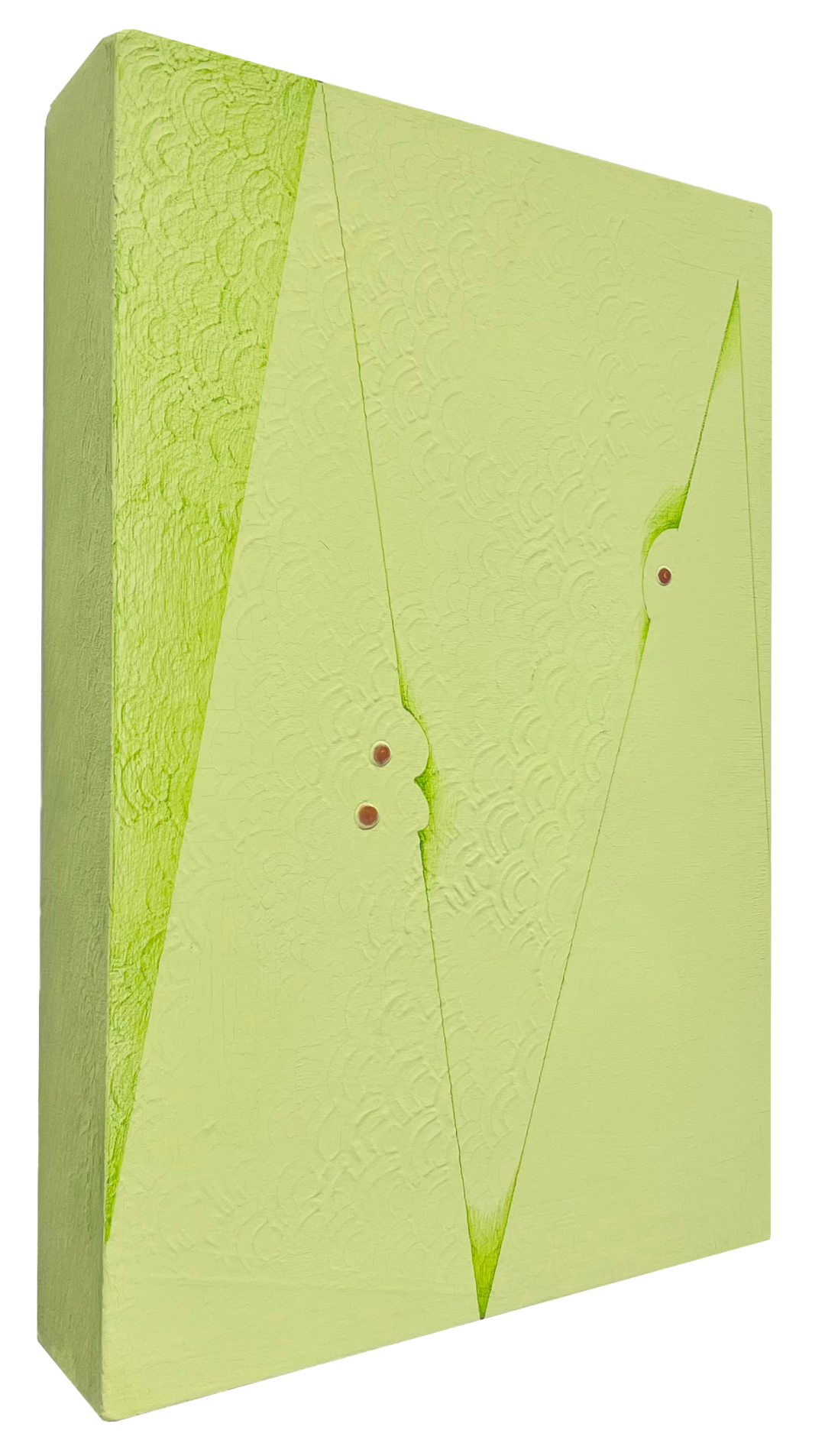
钱佳华 Qian Jiahua, 天秤少女 Libra Girl, 2021
在钱佳华的绘画中,线条是轮廓,是形状,是图像,也是物。它们在某种程度上回应了色域绘画的传统,但更多是来自于艺术家对于其所见的世界尽可能的、充分的图形化理解。颜色有时只是线条之间的填充,红、橙、黄、绿为这些绘画提供了结构支撑,但也像门上的铰链一样,暗示着运动。棱角分明的色域被转变成条形、块状和通道,共存于一个扁平的、抽象的画面之中。这些绘画看起来是多层次变形或复原的集合,所见即所得,所见非所得。这是一种巧妙的、灵动的幻觉,是我们所处的外部现实的生动镜像。
In Qian Jiahua's paintings, lines form contours, shapes, images, and objects. While her paintings may draw parallels to the characteristics of Colour Field painting, they are in fact, a graphic interpretation of the world through the artist's lens. Sometimes, her varying red, orange, yellow or green fields act as fillers that create structural support for her lines. Look again, and their function switches to that of a hinge that opens to the next room, an implication of the brewing momentum lodged beneath each layer. Here, we see a gamut of hard-edge colour planes readily permutated into stripes, blocks, and lanes, all harmoniously co-existing in a flat, abstract composition. Qian’s paintings are a multifaceted continuation of deformations or reformations that plays into a promise: what you see may or may not be what you get. Essentially, her economy of coloured forms takes on a subtle, dynamic illusion that idiomatically reflects our external reality.
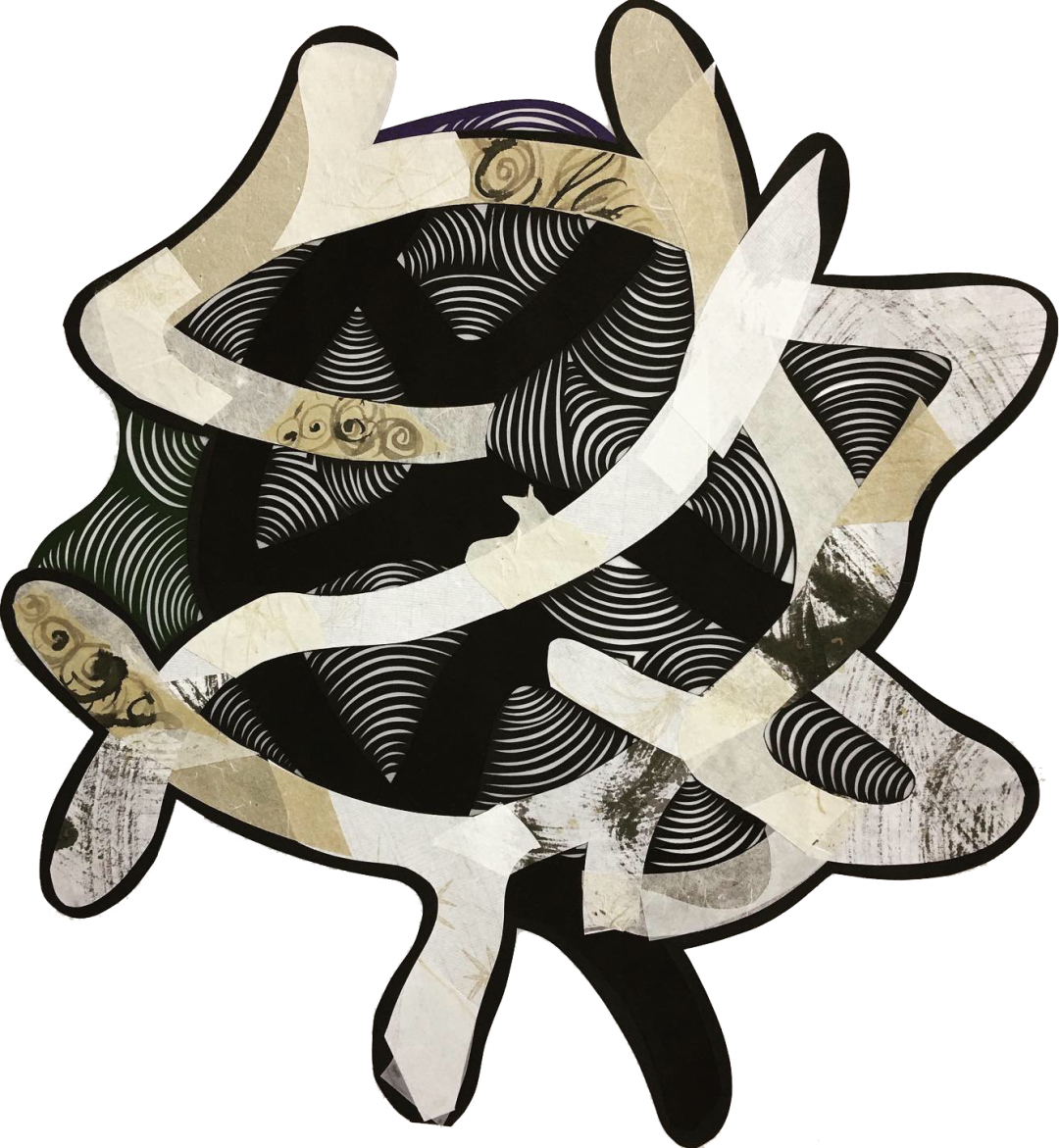
宋昕 Song Xin, 水系列 1 Water series 1, 2019
宋昕的剪纸与画笔编织、缠绕的线条,从层叠的纹理和图案中创造出别样的视觉表现,充满了原始但经过精心修饰的美感。以「水」命名的作品系列是一个个大脑的肖像,深得立体主义的精髓,在构成的连续中又创造了令人惊讶的空间断裂,混合了无尽的欲望与忧郁。对艺术家来说,纸与其说是一种媒介或材料,不如说是她的生活和艺术存在的基本参数,让她能够恣意地为生活赋形。这一点在她的纸质装置「放射」中得到更直观的、感性的展现。
From her paper cuts to her brushwork of interweaving lines and the interstice of textures and patterns, Song Xin's visual expression brims with a seemingly primitive but immaculately constructed aesthetic appeal. The artist’s "Wave" series, 2021, named after the Chinese character "水" water, comprises biomorphic portraits of the brain and can be seen as a stylistic nod to Cubism. As they simultaneously overlay and disrupt the composition's overall spatial consistency, these pieces are reminiscent of our human mind – a tangled labyrinth of endless desires and melancholia. As Song intuitively and emotionally demonstrated in her installation "Extension", the versatility of paper transcends beyond its physical properties as a medium or material. For her, it is a vital component in her life and the locus of her artistic vision. Through paper, she can mould life to form at will.
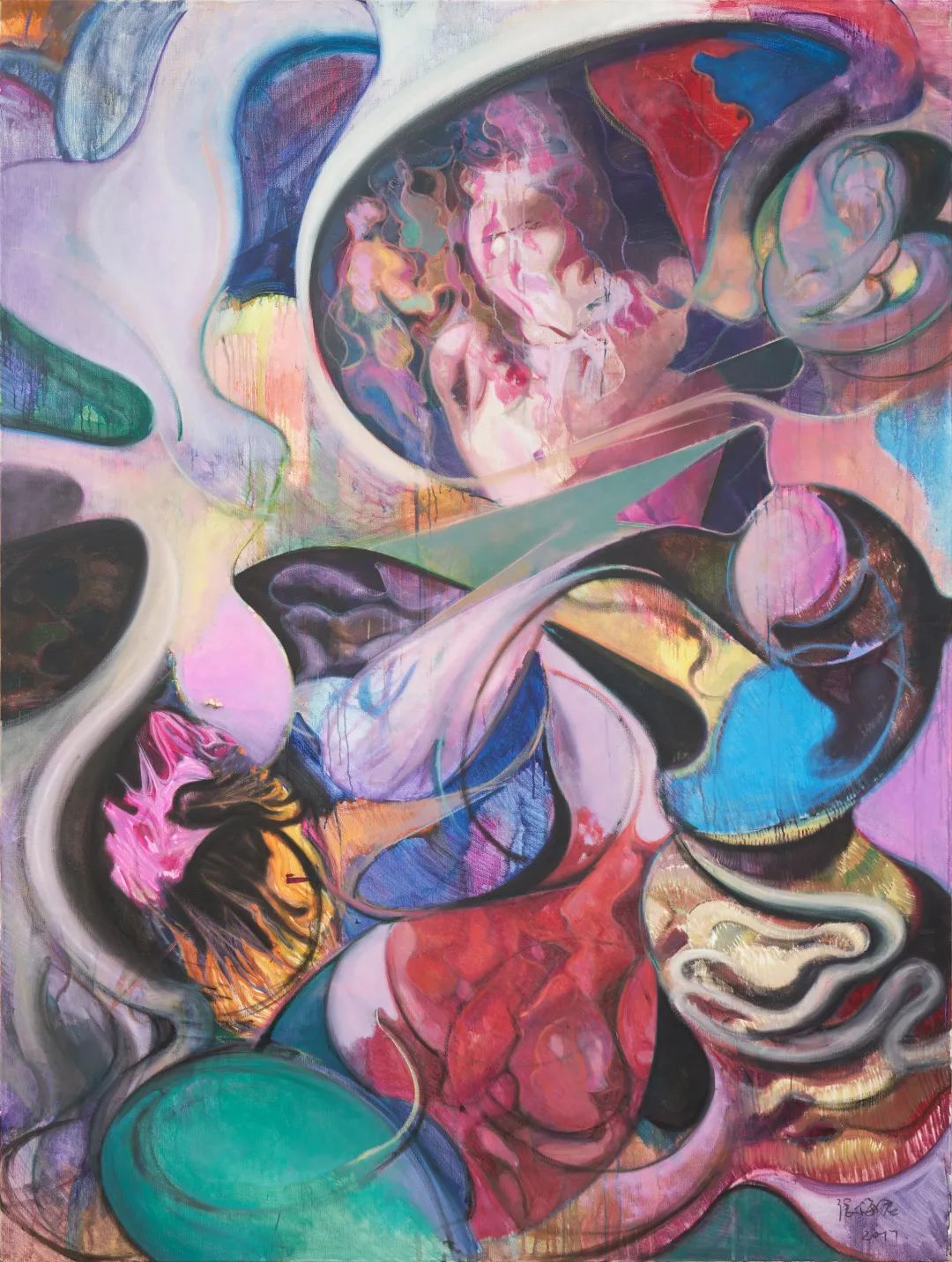
张海君 Zhang Haijun, 人间颂 Song of the People, 2017
从张海君的绘画中,我们可以看出他的兴趣在于图像与我们周围世界互动的方式。画中不寻常的构图反映了他对画面边缘及形色关系的迷恋。具象和抽象的组合可见表现主义和建构主义的影响。他在画中创造了各种各样的情绪,眩目的黄色和燃烧的红色与橙色碰撞,好似身体的呐喊与挣扎,以夸张的、扭曲的线条引导观众走上难以言表的视觉探索之路。
In Zhang Haijun's paintings, we can see his interest in the way images interact with our surrounding world. The unusualness captured in each composition reveals the artist’s fascination with a realm that extends beyond the canvas, and the relationship between colour and form. His visual language slides effortlessly between abstraction and figuration with influences from previous expressionist and constructivist periods. Each piece is emotionally charged, trailed in blinding yellows and burning collisions of crimson and orange, often resembling the physical phenomena of bodily outbursts and struggles. With a stream of gnarly, distorted lines, Zhang guides the audience onto an indescribable path of visual exploration.

「视线 Sight Lines」展览现场
面对抽象艺术时,我们很难将之笼统地归类为纯粹的艺术形式,相反,它总是植根于对现实世界的体验。在这个展览中,抽象绘画不是一条通往虚无的隧道,不是让万物消散无影,而是作为一种更有活力的艺术,鲜明地存在。
The challenge with abstract art is that it can never be neatly categorised in general terms as a pure art form. For one, it is related to the experience of the real world. In this exhibition, abstraction does not circumscribe to an absolute void/nothingness where everything dissipates without a trace, it is featured as a dynamic art form, and quintessentially, a fervent existence.
文/ 吴蔚
by Wu Wei
©文章版权归属原创作者,如有侵权请后台联系删除
